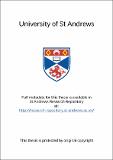Files in this item
Meaning and translation : theory and practice of machine translation as exemplified by applicative and cognitive grammars
Item metadata
| dc.contributor.author | Guerecheau, Chantal | en |
| dc.coverage.spatial | ix, 283 p : ill. 30 cm. | en |
| dc.date.accessioned | 2021-04-08T08:59:39Z | |
| dc.date.available | 2021-04-08T08:59:39Z | |
| dc.date.issued | 2003 | |
| dc.identifier.uri | https://hdl.handle.net/10023/21963 | |
| dc.description.abstract | This dissertation is articulated around machine translation theory and practice on the one hand, and translation theories and issues on the other hand. Machine translation, being based usually on a single natural language analysis, fails to encompass the complex operations performed on source and target texts belonging to source and target languages and cultures. This thesis compares machine and human translation of a large corpus of sentences (Le Petit Prince, by Antoine de Saint-Exupery), analyses how human beings translate, and how a translation programme processes the same text. The survey of the transfer processes - or shifts - displayed in several human translations (from French into English, German and Russian), as well as the analysis of the machine translation outputs (into English and German), show that machine translation should be reconsidered, not through source language analysis, but through the transfer operations performed on a source text to produce a target 'equivalent' text. Translation, seen as a cognitive operation, is here studied within the perspective of Applicative and Cognitive Grammars, formalisms rooted in Montague Grammar. More specifically, the Applicative and Cognitive Grammar, developed by Desclés, aims at determining a genotype language (a hypothetical universal semiotic system underlying all languages), and is developed around the theory of organised intermediate representation levels. Applicative and Cognitive Grammars can be seen as a step towards the setting-up of an interlingua architecture, which represents the next generation of machine translation systems. This research allows for an analysis of the deficiencies of a transfer translation system, as well as a better understanding of the processes of 'meaning transfer' in translation, seen as a semiotic operation. | en |
| dc.language.iso | en | en |
| dc.publisher | University of St Andrews | en |
| dc.subject.lcc | P309.G8 | |
| dc.subject.lcsh | Machine translating | en |
| dc.subject.lcsh | Translating and interpreting | en |
| dc.subject.lcsh | Applicative grammar | en |
| dc.subject.lcsh | Cognitive grammar | en |
| dc.title | Meaning and translation : theory and practice of machine translation as exemplified by applicative and cognitive grammars | en |
| dc.type | Thesis | en |
| dc.type.qualificationlevel | Doctoral | en |
| dc.type.qualificationname | DLang Doctor of Languages | en |
| dc.publisher.institution | The University of St Andrews | en |
This item appears in the following Collection(s)
Items in the St Andrews Research Repository are protected by copyright, with all rights reserved, unless otherwise indicated.

